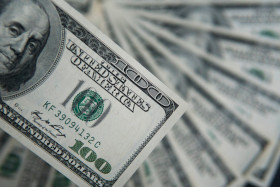The US dollar ended the trading week as the strongest currency on the Forex market thanks to risk aversion. The Australian and New Zealand dollars were the weakest due to the outlook for monetary easing from their respective central banks.
The greenback started the week strong due to risk aversions caused by the rising number of new COVID-19 cases around the world, concerns about the global economic recovery, political uncertainty associated with the upcoming presidential election in the United States, and other factors. Interestingly, other safe currencies, like the Japanese yen and the Swiss franc, failed to join the rally. Gold, also usually considered to be a safe haven, was also under pressure.
The Reserve Bank of New Zealand kept monetary policy unchanged but again signaled that it is preparing for implementing negative interest rates. That made the New Zealand dollar extremely weak, though not as weak as the Australian dollar. Officials from the Reserve Bank of Australia were also talking about an interest rate cut but were not sure if negative rates is an appropriate measure to prop up the economy. The possible reason why the Australian dollar fared worse than its New Zealand counterpart was the fact that analysts do not expect the RBNZ to act until the next year, while the RBA may cut rates as soon as the next month.
The Great Britain pound was under pressure from lack of progress in trade talks between the United Kingdom and the European Union as well as the rising number of coronavirus cases and measures to prevent another pandemic.
Turkey’s central bank surprised markets by a big interest rate hike. The lira rallied afterward, though the rally has quickly petered out.
EUR/USD dropped from 1.1846 to 1.1630. USD/JPY rallied from 104.51 to 105.55. GBP/USD fell from 1.2928 to 1.2742. AUD/USD tumbled from 0.7296 to 0.7030. NZD/USD sank from 0.6764 to 0.6546.
If you have any questions, comments, or opinions regarding the US Dollar, feel free to post them using the commentary form below.
Risk Aversion Helped Greenback End Week Strongest
